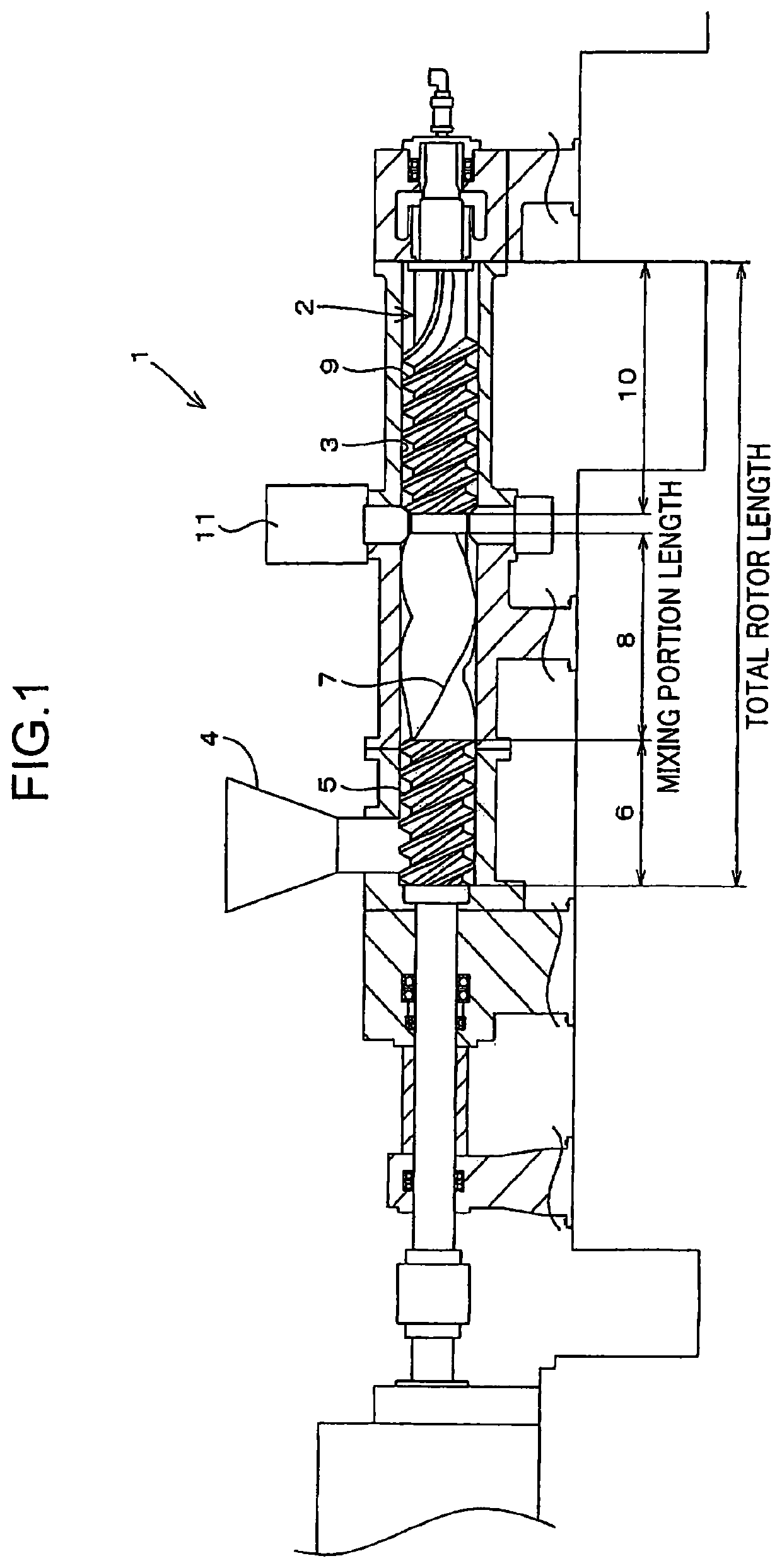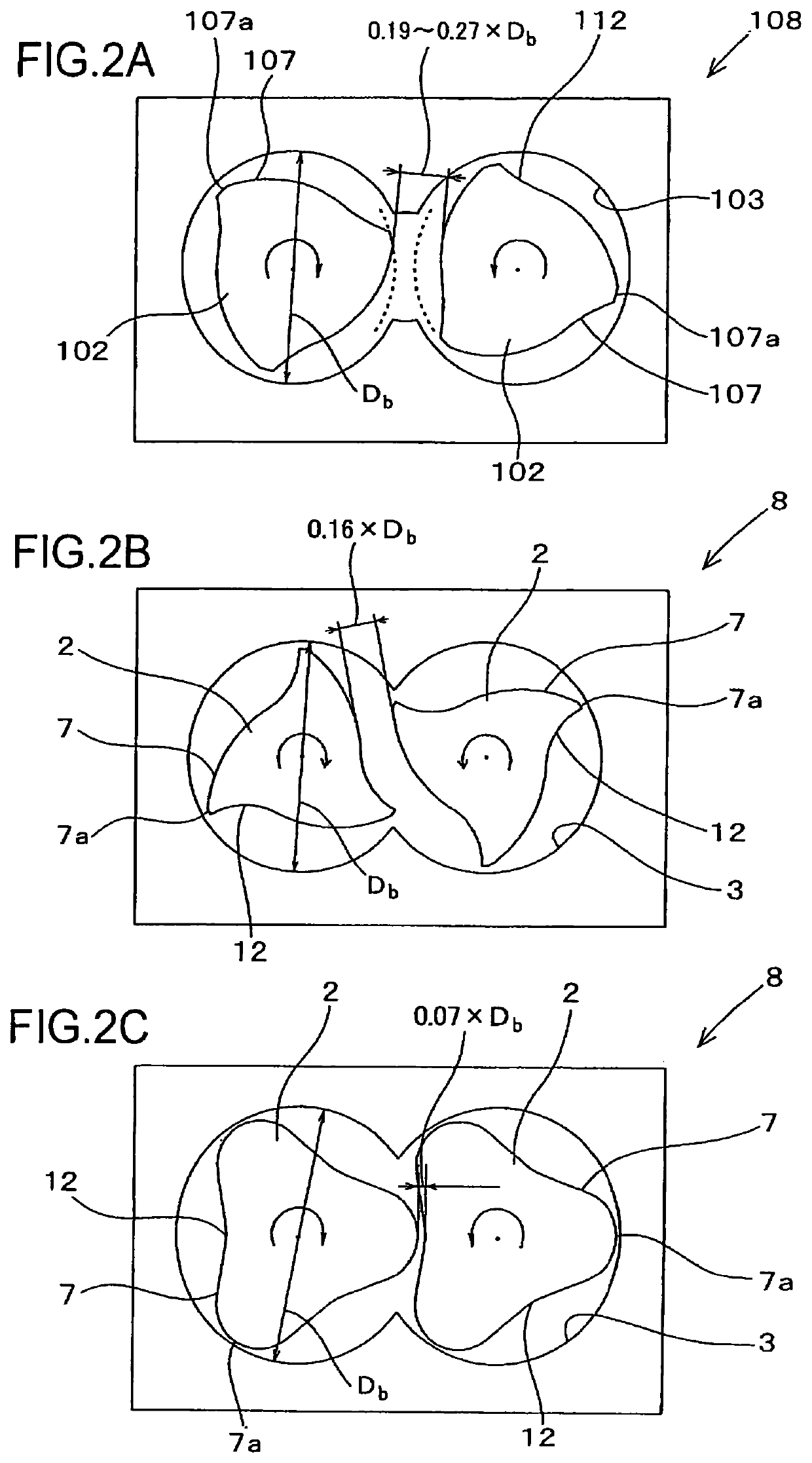Continuous twin-screw mixer and mixing method
a twin-screw mixer and mixer technology, applied in the direction of mixing, rotary stirring mixer, transportation and packaging, etc., can solve the problems of composite resin materials that cannot be sufficiently mixed by only a large shear force, and the material is prone to tearing and deformation, so as to achieve reliable and efficient mixing
- Summary
- Abstract
- Description
- Claims
- Application Information
AI Technical Summary
Benefits of technology
Problems solved by technology
Method used
Image
Examples
examples
[0076]The conventional example, the first example and the second example respectively shown in FIGS. 2A, 2B and 2C are described in more detail below.
[0077]First, the conventional mixer shown in FIG. 2A includes the barrel 103 having an inner diameter Db of 50 mm and a pair of mixing rotors 102 to be inserted into this barrel 103, the mixing rotors 102 being arranged so as to make the center distance therebetween be 50 mm. Each of the mixing rotors 102 includes an intermediate part in the axial direction which constitutes the mixing portion 108. Each of the mixing portions 108 includes three mixing flights 107 formed about the axial center of the mixing portion 108, and the inter-rotor clearance CR is formed between the both mixing portions 108, 108. In this conventional mixer, the mixing rotors 102 rotate in mutually different directions and the inter-rotor clearance CR varies within the range of 0.19 to 0.26-fold of the inner diameter of the barrel 103 during one rotation of each ...
PUM
| Property | Measurement | Unit |
|---|---|---|
| rotation angle | aaaaa | aaaaa |
| rotation angle | aaaaa | aaaaa |
| rotation angle | aaaaa | aaaaa |
Abstract
Description
Claims
Application Information
 Login to View More
Login to View More - R&D
- Intellectual Property
- Life Sciences
- Materials
- Tech Scout
- Unparalleled Data Quality
- Higher Quality Content
- 60% Fewer Hallucinations
Browse by: Latest US Patents, China's latest patents, Technical Efficacy Thesaurus, Application Domain, Technology Topic, Popular Technical Reports.
© 2025 PatSnap. All rights reserved.Legal|Privacy policy|Modern Slavery Act Transparency Statement|Sitemap|About US| Contact US: help@patsnap.com



